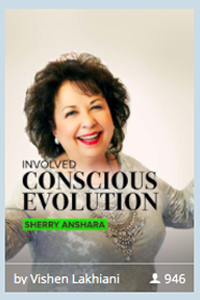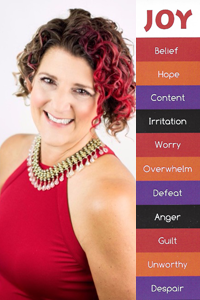Every failure feels like a crushing defeat that makes me question my self-worth and purpose. While I desired to wear multiple hats, meet every request, and bring a success, my toolset is incomplete and my skill across all disciplines is far from mastery. I can be chef and sous chef and wait tables, but that dilutes my genius. Attempting to focus on my strengths, I was asked to “stretch” and I agreed. In this effort, I could not reach far enough fast enough—though I gave my all in every attempt.
The course-corrections taken did not lead to smooth sailing. Resources were slim to none and new demands came on so strong, it was like drinking from a fire hose. I kept trying … and I will continue to seek the most productive outcome in every endeavor… still, I have not met with the delight of complete satisfaction.
Sometimes when you try to be and do everything, you become nothing, or a lot less than all.
However, when asked to step up to the plate, you gotta give it all ya got! Especially with a startup gig. The rush to get on base often requires concurrent planning and execution. Stutter steps happen along the way as the path becomes clarified and players come in and out of the game.
My “lane” is the strategic development. I create the brand plan—and the client team implements it. Areas for possible trip-ups include that there isn’t complete buy-in and there aren’t resources for implementation. Both of these bumps were present on this path, along with other challenges.
Still, when working for the vision, it is tough to realize disappointment. The victories drive action while defeat deflates momentum. I can only own my role — the few ways I could make a stronger player.
There were moments of victory. The joy of accomplishment fed my spirit till the next shoe fell behind in the race to forge ahead. When the brand plan was embraced and approved, things looked promising. And then there were the “squirrels” and distractions. Clients often desire to refresh the look before it takes hold. They want variety for the sake of amusement—not for the efficacy of impression. And, in the end, the client is always right. I can only create the plan, get approval, and remind them to stay on plan. When it is insisted to veer, I can only attempt to redirect traffic. And, often, I did.
I dared and I fell short of desired results. It would be tempting to come up with a single reason that things didn’t work out. But it isn’t that simple. And I must wrestle with, scrutinize, and learn from every misstep—as well as the few successes along the way. Perhaps I shall awaken to a new calling—all I know is that I’m trying to find my way. Here are the key takeaways from this unanswered prayer.
FIRST, make sure there is a PLAN.
If there is no plan, then there are only two choices. One is to create a plan and two is to walk away. I accepted an invitation to assist with marketing and branding projects for a startup in transition. There was a website, there was a business structure that was being revised for multiple entities — The Icon, The NonProfit Organization, The ForProfit Organization.
There was no plan. No vision. No mission. No strategy. At least, nothing in writing. Nothing shared. Here I offered to craft a short-term solution but the priority was set otherwise. I should have insisted on that being created or established in writing before proceeding. Instead, I took the carrot and ran with the project and its evolving particulars.
Thus, when I agreed to create a brand strategy for The Icon, it was an effort that stood alone and actually would be expected to lead all other actions. However, I was not in a position to be a leader in the developing organization structure, and there was no staff on board in the organization(s) to lead.
This leads to, SECOND, make sure there is staff or PERSONNEL to assist with execution.
After attempting to bring in colleagues to flesh out the talent pool, and realizing personality conflicts with the client, I made the mistake of attempting to fly solo and find resources along the way. I was in charge of developing the overall strategy for The Icon brand, however, it became clear that there was no implementation team. While there was an intention to assemble and hire a team, there was not a network in place.
Wanting to bring my “superpowers” and to realize success for the project, I took on the tasks of implementation across platforms that, strategically, required being revised, updated, or created. I spread myself too thin and I employed my adequate but not masterful skills of design, webmaster, leader, and etc to attempt translating the brand strategy across marketing efforts. I called for help and called out the gaps. Some were filled. Others remained gaping.
It was a disaster at best. The issues were many-fold. Time ticked away at its unforgiving pace and I was losing efficiency bouncing from one last-minute priority to another as deadlines flew in my face like pixels in a video game. People came in the fold for a while — for instance, a woman stepped up to take charge of social media — and the relief of assistance was further taxed by the need to train and align them.
For this, I created a plan — the Social Media Strategy was developed to assist brand presentation across Facebook and YouTube. From distinguishing a Profile from a Page and then concurrently creating a Celebrity Page on top of the existing NonProfit Organization Page plus planning for an eCommerce Page for exquisite items in the warehouse, this effort quickly scaled beyond reach. And, then the social media manager left the building.
With my hands full, I failed to pick up the threads and weave them into place, and I realized there was no clear path for reconciling all the loose ends. There was nowhere to turn.
So my last major key lesson is, THIRD, make sure there is a PROCESS—or that there are many processes—in place to support success.
Key processes include Defining, Supporting, and Reporting. The reporting structure needs clear definition so that attention can be brought to the weaknesses and shortfalls in order to thwart disaster. In the changing business structures, the Board of Directors members revolved in and out of the organization, and then disappeared. The one consistent Director traveled for work and was not a businessman so had little efficacy in leading the pack, though he took responsibility for funding all.
Expectations were often unclear and the scope of work changed during each project. I created and executed a series of Social Media posts that were determined to be off-brand after the fact — so I deleted all of them. Getting aligned was difficult and getting approvals was even more difficult. All input and feedback came from The Icon, who really should not have been bothered with such detail, and yet there was nowhere else to turn.
A process for defining the details including deadlines and every duty would assist progress to the plan. And a system of support is critical. Weekly meetings would veer off agenda so effective review didn’t happen and next steps were not certainly determined. I failed to create a place to give shared visibility to all so that changing dates and demands would be communicated undeniably and in a timely fashion.
I failed to uphold “no” when demands grew beyond my ability to stretch. I failed to “stop” and regroup to ensure alignment and support. I failed to find a way to voice requirements for success in a way that would capture attention and yield success that was better than haphazard. “Step up!” it was commanded. Get ‘er done! Then, even the victories got lost in the fog of let down.
I couldn’t dissuade the escalation of activity so disappointment was the way. This won’t be my experience next time, not at the next opportunity.
And a bonus key comes to mind; FOURTH, make sure you are a fit, PERSONALLY.
Camaraderie and cohesion aid accomplishment. While I met weekly with The Icon, I rarely felt heard. While I respect and revere the position of The Icon, I worked to remain objective. I did not find a way to drink the kool-aid and still serve in my hired role. Keeping out of the grey area meant keeping out of the cultural current. I attended a couple events to get to know the energy of The Icon’s work, as direct experience assists understanding and the ability to message it. Still, I felt it important to serve in my role rather than be served by The Icon. I stayed on the sidelines, in my lane of hired hand.
So again, perhaps I am not a fit in this as I see the newly hired full-time staff immerse themselves in the flow while taking on challenges full force. Or perhaps this is the plight of a contractor vs an employee — always on the outside looking in.
While I am drawn to The Icon and the work, I have a perspective of an observer and I keep my personal boundaries with great care. It is, perhaps, not the best alignment for this particular client. With full-time staff on board, there is a new direction emerging. So be it. I will hang on to the glimpses of achievement in the sea of simultaneous engineering this startup went through. Growing pains. Awkward like adolescence. Now taking off to experience the next stage of expansion.
My goal is to learn from this adventure in failure. To hone my strengths and shore up my weaknesses. And, one day, the people who doubt me will be the ones who talk about the one day when they met me. I might even be one of them.
I should have declined projects when we discussed that I was the wrong person for the detail work. It was out of alignment with my skill set. When asked to step up, I did. I should have said no. Still, some things went well. Overall it was disappointing. In trying to be everything, I was reduced to nothing.














